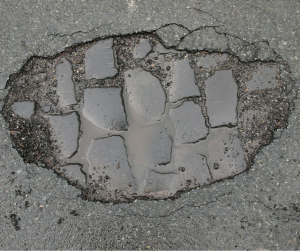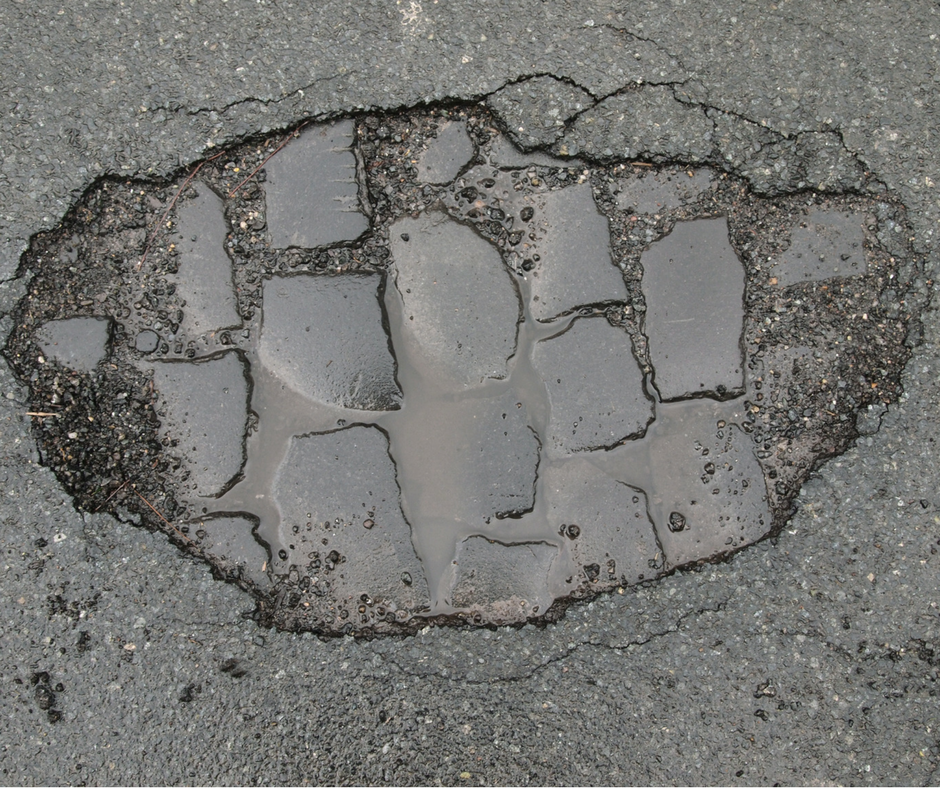Paving Those Pesky Potholes
Published on October 18, 2016

The sun beats down as summer refuses to surrender and you navigate around a fortress of orange cones protecting a crew from Huntsville’s Department of Public Works.
You immediately have two thoughts:
One, how can they do this in that heat?
Two, how can I get them to fix my street?
An easy answer to the first:
“A dedicated work force,” praises Chris McNeese, director of the Department of Public Works, a civil engineering graduated from the University of Alabama in Huntsville, who has just marked his first anniversary in that position and 18 th with the department.
“The Department of Public Works tackles an average of 2,800 to 3,000 potholes per week…They drive every day to look for deficiencies and to respond.”
The Department of Public Works is actually two forces in one, handling both sanitation and road construction for the city. There are some 220 employees, 100 on the sanitation side, 120 in construction.
So, to the second question, on bringing that work to a road near you:
The best first step is through Huntsville Connect, the City’s service request program (available on mobile app and on the web), where citizens may report issues of myriad concern. Or, you may call 256-883-3944.
But there’s a good chance you’re already on the radar. It’s just a matter of time, priority, expense and planning.
According to McNeese, right-of-way inspectors in his department are constantly driving through the city and checking on road conditions. The potholes or the so-called “alligator cracking,” the scabs where the pavement loses its bonding strength, are placed on a rating scale in terms of severity and, thus, in priority for repair.
It’s a year-‘round business, though it’s also seasonal.
As Mayor Tommy Battle says, “February and March are pothole season. They’re popping up like popcorn. But the winter season brings problems, too.”
“All roads are naturally subjected to weather,” McNeese says. “It causes overall deterioration. But some hold up better than others.”
As it turns out, weather is also a factor in how and when potholes are repaired. The temperature determines whether to put in a temporary patch which will be followed by a more substantial repair when the weather improves.
The Department of Public Works tackles an average of 2,800 to 3,000 potholes per week, with four different crews with a path truck. Says McNeese, “They drive every day to look for deficiencies and to respond.”
The “major collectors,” the highly traveled roads, are the obvious top priority, followed by the “minor collectors,” then residential streets.
The planning aspect plays into things in attempting to be as fiscally creative as possible, where crew will make as many repairs as possible in one neighborhood over the course of a week, then move elsewhere. The city’s budget for road repair is $4.7 million annually; considering a price tag of a $54,000 a lane for a one-mile path of road construction, it’s not an inexpensive proposition.
“We’re trying to stretch the dollars the best we can,” McNeese says. “Our goal is to eventually get to all of the roads.”
Mark McCarter is a regular contributor to CityNews


